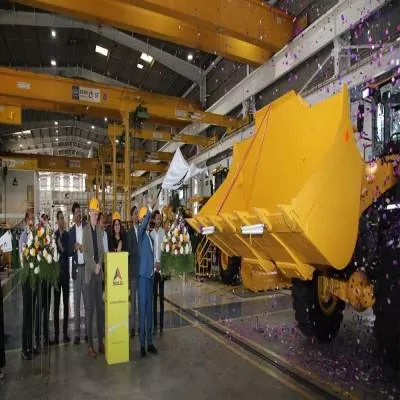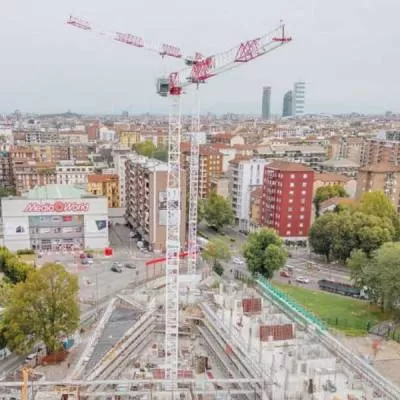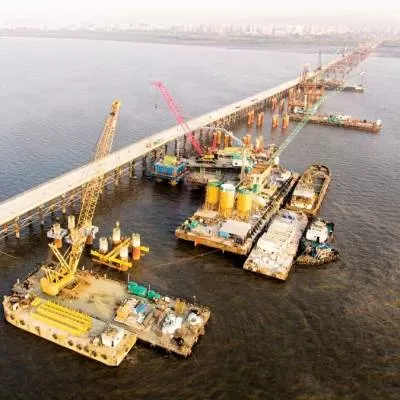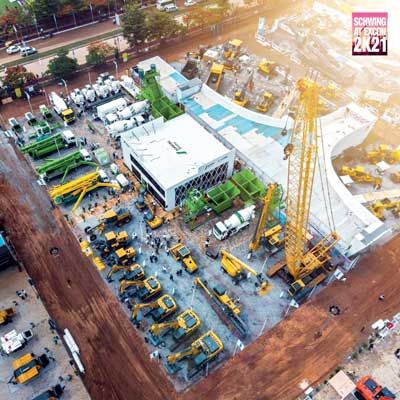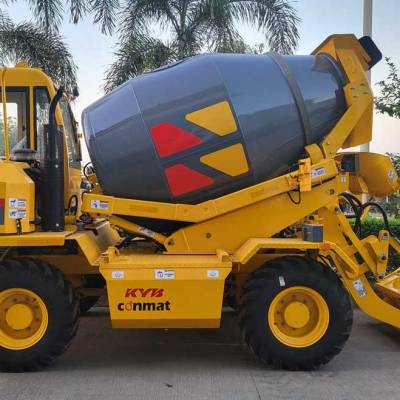
With increased construction, there will be a need to procure or lease more equipment
The government proposes to award Rs 500,000 crore worth of highway contracts, totalling about 50,000 km, in the last two years of its tenure, and to ensure that paving for 30,000 km (of the awarded contracts) starts before its term ends. 'This plan to significantly upgrade India's infrastructure, such as the roadway network, over the next several years is critical to ensuring high economic growth rates for the years to come, including increased employment opportunities,' believes Kshitish V Nadgauda, Senior Vice President and Managing Director-Asia, Louis Berger. For him, the industry will certainly rise to the occasion and deliver projects on such an ambitious scale, increasing their resource bandwidth. 'In addition, the government has been open to multi-national firms or international firms partnered with local Indian firms,' he says, as he shares more with CW.
Proposed projects will include 44 economic corridors and 10 expressways, and the char dham connectivity programme, Northeast connectivity programme and the borders-linking projects. What are your views on the geographic spread of the opportunity?
The expressways will provide rapid mobility along major corridors within the country. This is absolutely critical - primarily to increase the safety and efficiency of transportation throughout India. This road network will give the interior regions of the country access to the major economic corridors vital for growth and development. For example, the Northeast region is economically lagging behind the rest of the country due to its relatively underdeveloped roadway infrastructure. The programme to expand the roadway network in the Northeast is therefore welcome and vital, set to spur economic development in the region. And, the border linking projects will contribute greatly not only towards national security but also would boost trade with our neighbours. Through these various roadway development programmes, the government is working towards uniform development across the country. This will act as a catalyst for spreading economic development, providing better options and increased employment opportunities for those who wish to remain in their home regions. The concurrent plan by the government to establish new well-planned townships or cities along roadway corridors will work hand-in-hand with the roadway infrastructure upgrading programme.
What are your approximate utilisation rates for your key road equipment?
As a consultancy services organisation, this question is not directly relevant to our business. Our biggest resource is our people. With an increasingly high percentage of online projects, we are constantly recruiting additional staff and, offering employment opportunities to technical, semi-technical as well as administrative staff. Utilisation rates of construction equipment will no doubt increase. With increased construction activity, there will be a need for firms to procure or lease additional equipment, thus boosting ancillary sectors.
The government has also approved a Rs.6,461 crore project for the development of 1,120 km NHs in Karnataka, Odisha, Bihar, Rajasthan and West Bengal under the National Highways Interconnectivity Improvement Project. Are such projects in backward regions as appealing as other highways?
Projects in underdeveloped areas of the country are equally important. Provision of safe, fast and all-weather access to the interior parts of the country will lead to the creation of new economic zones, thus generating employment and enabling local residents to live and work in their home regions. As with any infrastructure programme, there are always opposing or alternate views that need to be addressed. That said, the net benefits of such a roadway programme are self-evident. One of the primary challenges this roadway expansion programme presents is potential environmental and social impacts. These impacts will need to be adequately assessed and mitigated.
- Kshitish V Nadgauda, Senior Vice President, Managing Director-Asia, Louis Berger The government proposes to award Rs 500,000 crore worth of highway contracts, totalling about 50,000 km, in the last two years of its tenure, and to ensure that paving for 30,000 km (of the awarded contracts) starts before its term ends. 'This plan to significantly upgrade India's infrastructure, such as the roadway network, over the next several years is critical to ensuring high economic growth rates for the years to come, including increased employment opportunities,' believes Kshitish V Nadgauda, Senior Vice President and Managing Director-Asia, Louis Berger. For him, the industry will certainly rise to the occasion and deliver projects on such an ambitious scale, increasing their resource bandwidth. 'In addition, the government has been open to multi-national firms or international firms partnered with local Indian firms,' he says, as he shares more with CW. Proposed projects will include 44 economic corridors and 10 expressways, and the char dham connectivity programme, Northeast connectivity programme and the borders-linking projects. What are your views on the geographic spread of the opportunity? The expressways will provide rapid mobility along major corridors within the country. This is absolutely critical - primarily to increase the safety and efficiency of transportation throughout India. This road network will give the interior regions of the country access to the major economic corridors vital for growth and development. For example, the Northeast region is economically lagging behind the rest of the country due to its relatively underdeveloped roadway infrastructure. The programme to expand the roadway network in the Northeast is therefore welcome and vital, set to spur economic development in the region. And, the border linking projects will contribute greatly not only towards national security but also would boost trade with our neighbours. Through these various roadway development programmes, the government is working towards uniform development across the country. This will act as a catalyst for spreading economic development, providing better options and increased employment opportunities for those who wish to remain in their home regions. The concurrent plan by the government to establish new well-planned townships or cities along roadway corridors will work hand-in-hand with the roadway infrastructure upgrading programme. What are your approximate utilisation rates for your key road equipment? As a consultancy services organisation, this question is not directly relevant to our business. Our biggest resource is our people. With an increasingly high percentage of online projects, we are constantly recruiting additional staff and, offering employment opportunities to technical, semi-technical as well as administrative staff. Utilisation rates of construction equipment will no doubt increase. With increased construction activity, there will be a need for firms to procure or lease additional equipment, thus boosting ancillary sectors. The government has also approved a Rs.6,461 crore project for the development of 1,120 km NHs in Karnataka, Odisha, Bihar, Rajasthan and West Bengal under the National Highways Interconnectivity Improvement Project. Are such projects in backward regions as appealing as other highways? Projects in underdeveloped areas of the country are equally important. Provision of safe, fast and all-weather access to the interior parts of the country will lead to the creation of new economic zones, thus generating employment and enabling local residents to live and work in their home regions. As with any infrastructure programme, there are always opposing or alternate views that need to be addressed. That said, the net benefits of such a roadway programme are self-evident. One of the primary challenges this roadway expansion programme presents is potential environmental and social impacts. These impacts will need to be adequately assessed and mitigated.



